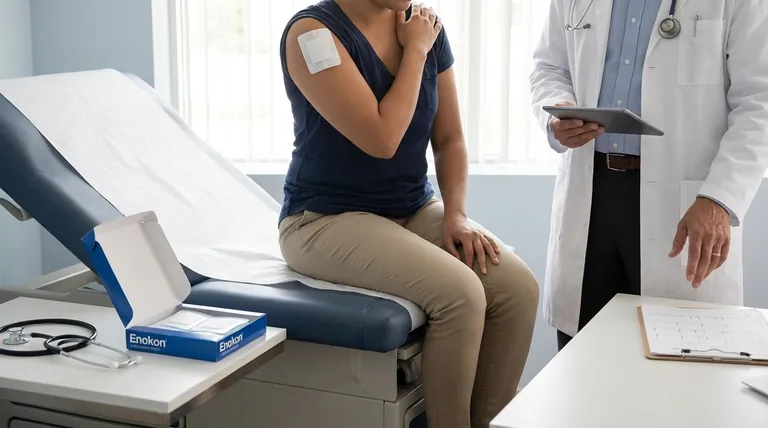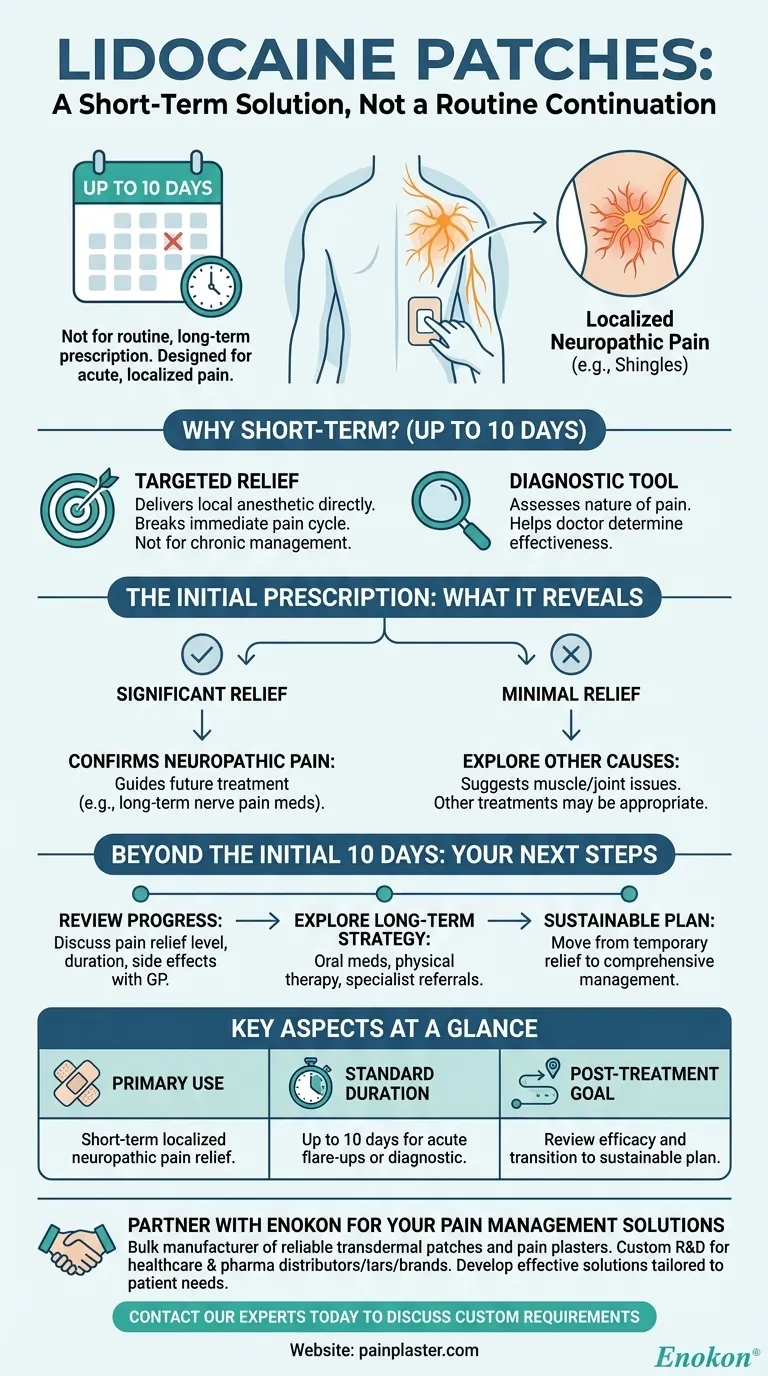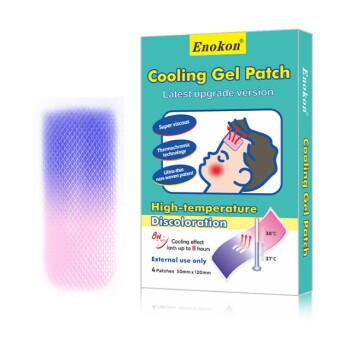No, it is not routine for a GP to continue prescribing lidocaine patches beyond the initial treatment period. These patches are specifically intended for short-term use, typically for a duration of up to 10 days, to manage acute, localized pain.
The limited duration of a lidocaine patch prescription is not an endpoint for your treatment, but a specific tool for a specific phase of your pain. Its purpose is to provide temporary relief and help your doctor assess the nature of your pain to determine the most effective long-term strategy.

Why Lidocaine Patches Are a Short-Term Solution
Lidocaine patches work by delivering a local anesthetic directly to the painful area of the skin. This mechanism is highly effective for a specific type of pain but is not designed for chronic, ongoing management.
The Intended Purpose
A lidocaine patch is primarily used to treat localized neuropathic pain, which is pain caused by nerve damage. A classic example is the pain following a shingles infection (post-herpetic neuralgia).
The goal is to provide targeted, temporary relief to a small area. This helps to break the immediate pain cycle while the underlying condition is addressed or resolves.
The Limited Duration
The standard prescription length of up to 10 days is intentional. This period is considered sufficient to manage an acute flare-up or to determine if this type of localized treatment is effective for your specific condition.
The Role of the Initial Prescription
Think of the first prescription for lidocaine patches as a diagnostic tool as much as a treatment. Your GP is trying to answer critical questions about your condition.
Confirming the Pain Type
If the patches provide significant relief, it gives your doctor valuable information. It strongly suggests that your pain has a localized, neuropathic component, which helps guide future treatment decisions.
Assessing Efficacy
Conversely, if the patches offer little to no benefit, that is also a crucial piece of information. It indicates that the pain may stem from a different source (like muscle or joint inflammation) and that other treatments would be more appropriate.
What to Expect After the Initial Period
When your initial prescription ends, the next step is a follow-up consultation with your GP. This is a critical point in developing a sustainable pain management plan.
Reviewing Your Progress
Your doctor will want to discuss how effective the patches were. Be prepared to talk about the level of pain relief you experienced, how long it lasted, and any side effects you noticed.
Exploring Long-Term Options
Based on your experience with the patches, your GP will discuss a more sustainable approach. This could include oral medications, physical therapy, or referrals to a specialist pain clinic. The goal is to move from temporary relief to a comprehensive management strategy.
Making the Right Choice for Your Goal
Your experience with the patches provides crucial information. Use it to have a productive conversation with your doctor about the next steps.
- If the patches provided significant relief: This indicates a neuropathic component to your pain, and you can discuss long-term treatments specifically targeting nerve pain.
- If the patches offered minimal relief: This helps rule out certain causes, allowing your doctor to investigate other possibilities like musculoskeletal issues.
- If you are concerned about ongoing pain: The end of the initial prescription is the correct time to partner with your GP to create a comprehensive and sustainable pain management plan.
Ultimately, this initial short-term treatment is a critical first step toward finding a lasting solution for your pain.
Summary Table:
| Key Aspect | Details |
|---|---|
| Primary Use | Short-term relief for localized neuropathic pain (e.g., post-herpetic neuralgia). |
| Standard Duration | Up to 10 days for acute flare-ups or diagnostic assessment. |
| Post-Treatment Goal | To review efficacy and transition to a sustainable, long-term pain management plan. |
Partner with Enokon for Your Pain Management Solutions
If your practice or brand requires reliable, high-quality transdermal patches for pain relief, Enokon is your trusted manufacturing partner. As a bulk manufacturer of reliable transdermal patches and pain plasters, we serve healthcare and pharmaceutical distributors and brands with custom R&D and development expertise.
Benefit from our technical knowledge to create effective solutions tailored to your patients' needs. Let's work together to develop the next generation of pain management products.
Contact our experts today to discuss your custom patch requirements.
Visual Guide

Related Products
- Lidocaine Hydrogel Pain Relief Patch for Pain Relief
- Capsaicin Chili Medicated Pain Relief Patches
- Far Infrared Deep Heat Relief Patches Medicated Pain Relief Patches
- Asthma Cough and Pain Relief Patch for Adults and Kids
- Heating Pain Relief Patches for Menstrual Cramps
People Also Ask
- How should the treated area be protected while wearing a lidocaine patch? Safety Tips for Effective Pain Relief
- How can you use lidocaine patches for multiple sore spots? A Guide to Safe, Effective Pain Relief
- For what condition are lidocaine patches approved in the United Kingdom? A Guide to Postherpetic Neuralgia Treatment
- Is it safe to use lidocaine patches while breastfeeding? Expert Guidance for Nursing Mothers
- When should someone contact a doctor regarding lidocaine patch use? Ensure Safe Pain Relief
















